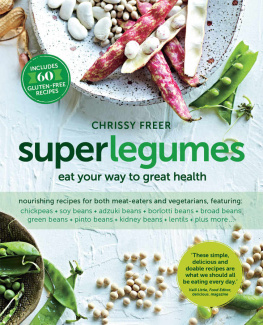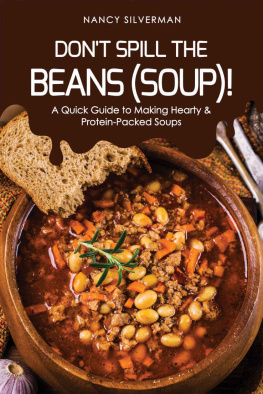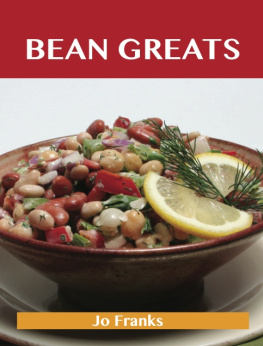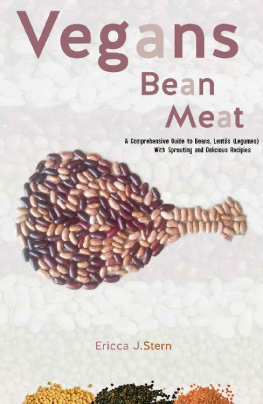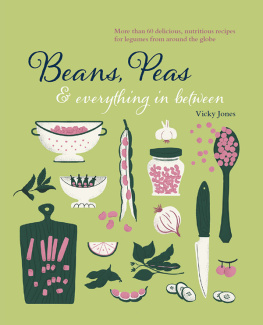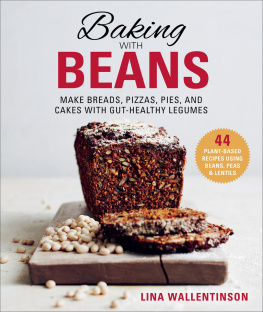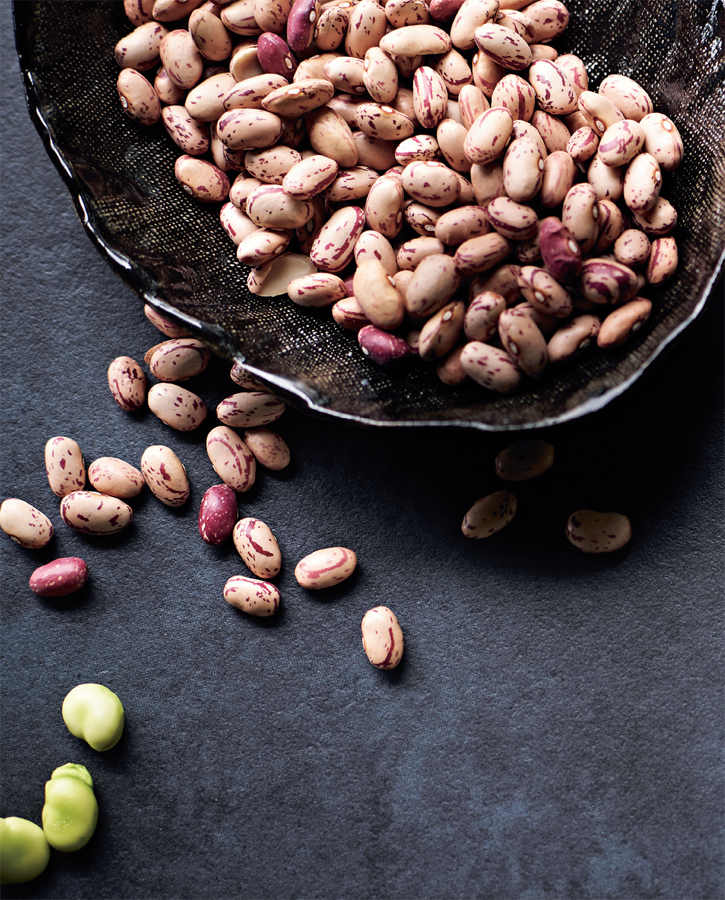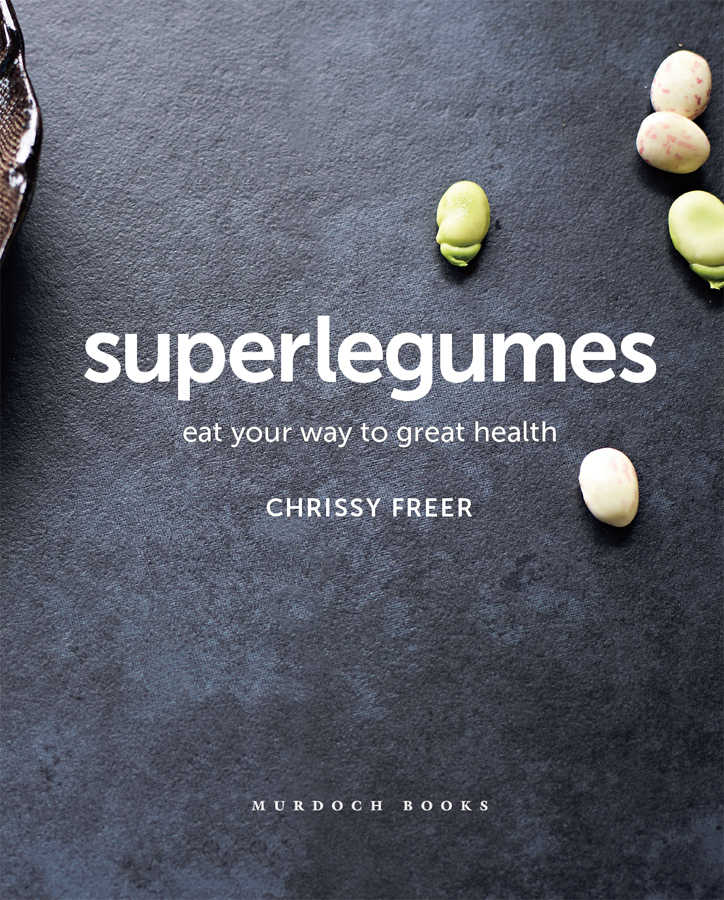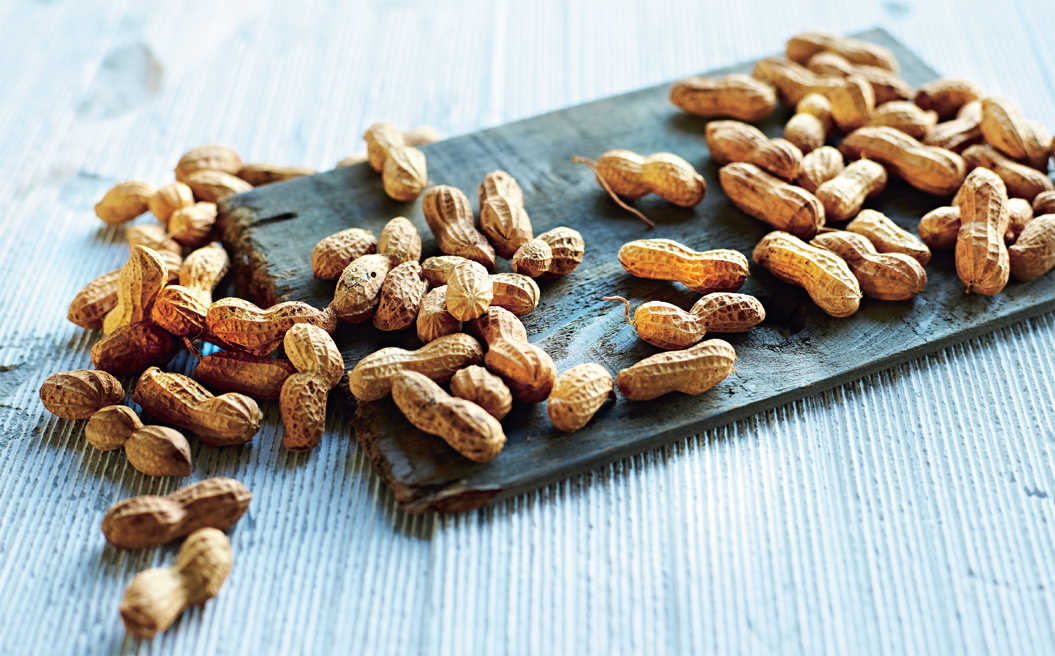introduction
When we think of legumes , we typically think of the legumes we eat as dried seeds white beans, chickpeas, borlotti beans, adzuki beans, kidney beans, pinto beans, dried peas, black beans, lentils and the like. All are delicious, versatile and nutritious. But we tend not to think of the legumes that are eaten fresh, such as green peas, crisp soy beans, crunchy green beans, brightly coloured borlotti beans and young broad beans. The legume family also encompasses such surprising members as wattleseed, carob, mesquite, lupins and even peanuts. This book explores legumes in all their many and varied states.
What all legumes have in common is that theyre members of the Fabaceae family. Its an extensive family, comprising some 13,000 different species grown worldwide. All legumes produce seed-bearing pods, and when the seeds are dried, theyre sometimes referred to as pulses.
Legumes are whole foods that is, foods as close to their natural state as possible. The health and nutritional benefits of eating a diet rich in whole foods is starting to gain the recognition it deserves, especially in light of the abundance of highly processed foods that line the shelves of our supermarkets.
Whole food doesnt need to mean food that is time-consuming or fiddly to prepare. Legumes are readily available, easy to cook, inexpensive compared to other protein sources, suitable for a wide range of cooking styles and very flavoursome.
Whats more, legumes are nutritional powerhouses, among natures true super foods. Eating legumes regularly has been linked to numerous health and nutritional benefits.
Nutritional benefits of legumes
Legumes are not only high in carbohydrate, fibre and protein, theyre also rich in several micronutrients including B-group vitamins, iron, calcium, phosphorus, zinc and magnesium. Legumes are a good source of folate (essential for women of child-bearing age) and antioxidants. Theyre low in saturated fats, theyre gluten-free and they have a low glycemic index (GI).
Protein Protein plays an important role throughout the human body; it is essential for growth and repair.
Legumes are an extremely valuable protein source, particularly for vegetarians and vegans, and they typically comprise 2530% protein. One cup (approximately 150 g) of cooked legumes is considered a serving of protein, and it is recommended that we eat two to three servings of protein per day.
Proteins are made up of building blocks called amino acids, which can be classified as essential or non-essential. Essential amino acids must be consumed in the diet because they cant be made by the body; there are nine of these. If a protein contains all nine essential amino acids, it is referred to as a complete protein.
Soy beans are a particularly notable source of protein because they contain all the essential amino acids, which makes them a complete protein.
However, even legumes that dont contain all the essential amino acids form a complete protein when combined with a whole grain, such as rice or corn. Legumes have traditionally been served with grains in many cultures think of staple combinations such as lentils and rice, or black beans and grits.
Its not necessary, though, to consume all the components of a complete protein in one sitting to gain its benefits. A diet of nutritious foods including legumes and whole grains eaten over the course of a day will provide all the essential amino acids.
Fibre There are two main types of dietary fibre: soluble and insoluble. Legumes are rich in both.
Soluble fibre attracts water and forms a thick gel-like substance during digestion, in turn slowing down the digestive process. This can slow the absorption of sugar, resulting in lower blood sugar levels. Soluble fibre can also assist in heart health by lowering bad blood cholesterol.
Insoluble fibre, in contrast, doesnt dissolve in water. It passes through the digestive tract intact, adding bulk to stools and therefore helping food pass through more quickly. This can assist in preventing constipation and irritable bowel, as well as keeping the colon healthy. A diet high in insoluble fibre has been linked to a reduced risk of some cancers, especially colon cancer.
Weight control The relationship between legumes and weight management is multifaceted. As already mentioned, their high fibre content helps to provide an early sensation of fullness and can help trigger the feeling of having had enough to eat. This can result in lower overall food consumption and lower energy intake.
The low GI value of legumes acts to slow the absorption of glucose into the bloodstream, resulting in greater insulin sensitivity and improved secretion of hormones such as leptin, which helps regulate the amount of fat stored in the body.
Diets high in protein have been linked to weight control and even weight loss, and legumes are high-protein foods. Whats more, you can eat a generous serve of legumes without consuming a lot of fat or kilojoules (calories).
All these factors make legumes an invaluable aid in long-term weight control.
Glycemic index and diabetes management The glycemic index (GI) ranks foods according to the effect of their carbohydrates on blood glucose levels. Low-GI foods release glucose slowly, resulting in steady, sustained energy levels. In contrast, high-GI foods release glucose quickly and cause sudden spikes in blood sugar. A low-GI diet is essential in the management of diabetes. Legumes are among the lowest GI foods, which makes them ideal for people with diabetes.
Fighting cancer and disease Legumes contain various phytochemicals (such as antioxidants, flavanoids and isoflavones) that have been linked to a reduced risk of certain cancers and diseases such as heart disease. Soy beans, in particular, are among the richest sources of isoflavones, which have been linked to various health benefits including easing of menopausal symptoms in women, reduced risk of osteoporosis, and reduced risk of certain cancers such as breast cancer.

